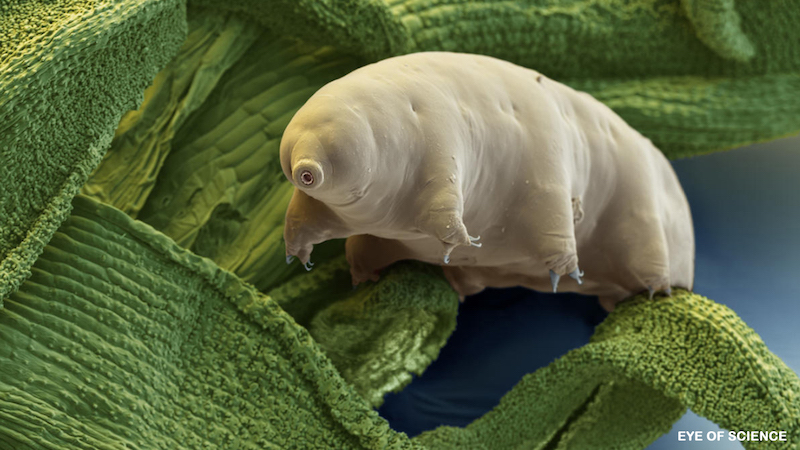A new experiment aboard the International Space Station (ISS) is studying tardigrades, tiny creatures also known as water bears because of the way they look under a microscope. Tardigrades can tolerate the hottest and coldest environments on Earth, and can survive decades without water. The new experiment – called Cell Science-04 – aims to identify the genes involved in water bears’ abiliy to survive and adapt to high-stress environments, including the one astronauts experience in space. NASA said scientists hope the findings can help guide research into protecting humans from the stresses of long-duration space travel.
The tardigrades arrived at the ISS on June 5, 2021, via the SpaceX Dragon cargo spacecraft. But the Cell Science-04 water bears aren’t the first tardigrades to visit space. In 2007, a European research team sent 3,000 living tardigrades into Earth orbit for 12 days on the outside of a FOTON-M3 rocket (68% of them survived.). This time, the water bears will live onboard, inside special science hardware that lets scientists carry out long-term studies of cultures of cells, tissues, and microscopic animals in space by allowing real-time, remote monitoring, and control over the tardigrades’ living conditions.
Microscopic water bears to help protect astronaut health
Tardigrades possess superpowers when it comes to surviving really harsh conditions. They can live for up to 60 years, can survive for up to 30 years without food or water, and are able to endure temperature extremes of up to 150 degrees Celsius (300 degrees F), the deep sea and even the microgravity and elevated radiation levels of space. Water bears survive extreme conditions by going into a state of suspended animation. Essentially, water bears can dry up and survive for years without water, carried around on the wind. When they do come into contact with water, they revive and get on with their lives as though nothing happened.
The Cell Science-04 experiment will help reveal how tardigrades do it.
University of Wyoming biologist Thomas Boothby is principal investigator of the experiment. Boothby said in a statement:
We want to see what ‘tricks’ they use to survive when they arrive in space, and, over time, what tricks their offspring use. Are they the same or do they change across generations? We just don’t know what to expect.
Boothby said that one option in the tardigrade bag of tricks could be producing tons more antioxidants to combat harmful changes in the body caused by increased radiation exposure in space. He said:
We have seen them do this in response to radiation on Earth, and we think the ways tardigrades have evolved to withstand extreme environments on this planet may also be what protects them against the stresses of spaceflight.

NASA said in a statement:
The research team will look at what happens with tardigrade genes in space. Knowing which ones turn on or off in response to short-term and long-term spaceflight will help researchers identify specific ways tardigrades use to survive in this stressful environment. If one solution they have is to turn up the dial on antioxidant production, for example, genes involved in that process should be affected.
Checking which genes are also activated or deactivated by other stresses will help pinpoint the genes that respond exclusively to spaceflight. Cell Science-04 will then test which are truly required for tardigrade adaptation and survival in this high-stress environment.
In the long run, NASA said, revealing what makes tardigrades so tolerant could lead to ways of protecting biological material, such as food and medicine, from extreme temperatures, drying out and radiation exposure, which will be invaluable for long-duration deep-space exploration missions.
Bottom line: A new experiment aboard the ISS is studying tardigrades – aka water bears – to better understand how they tolerate extreme environments, including the one astronauts experience in space.











